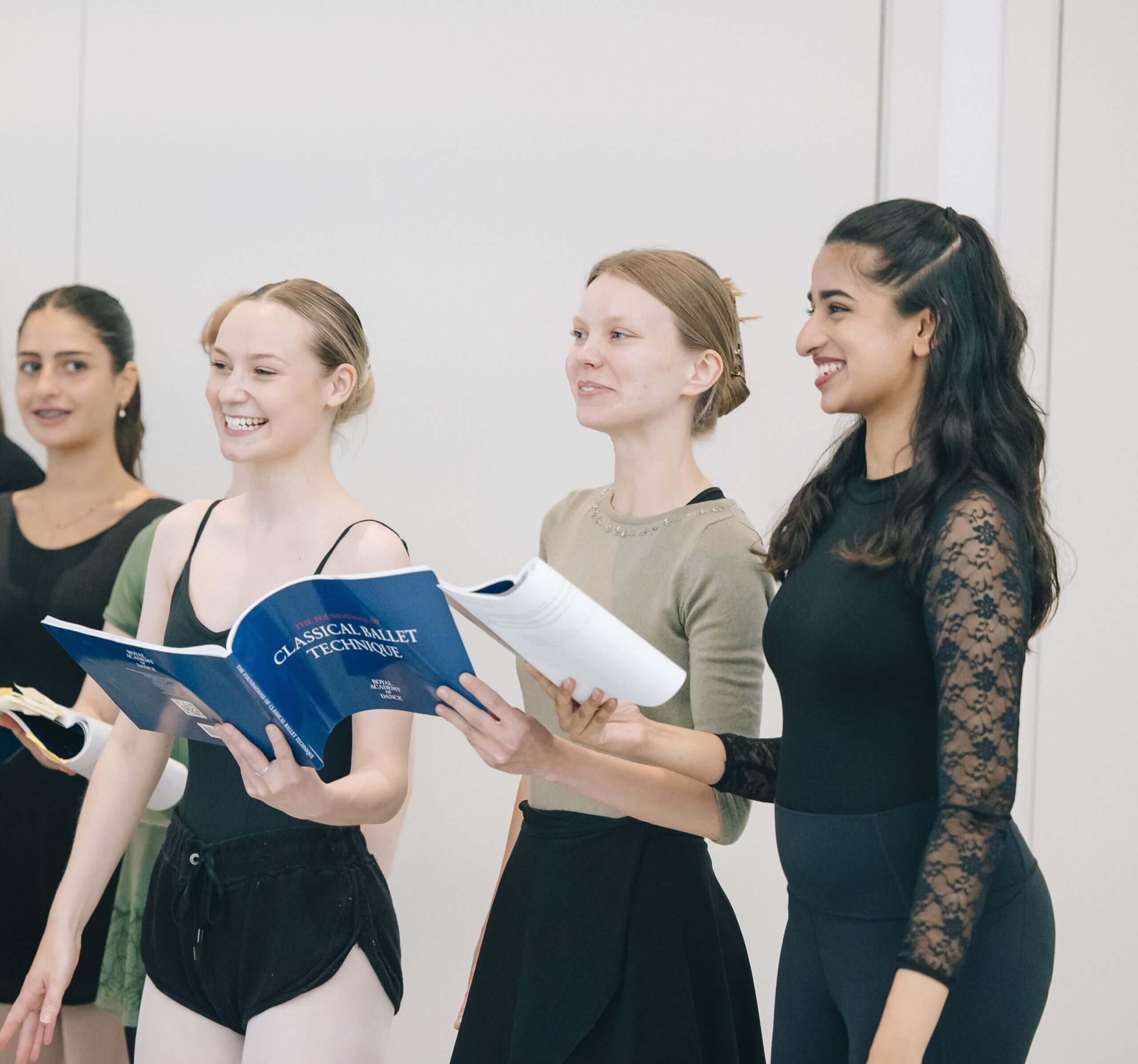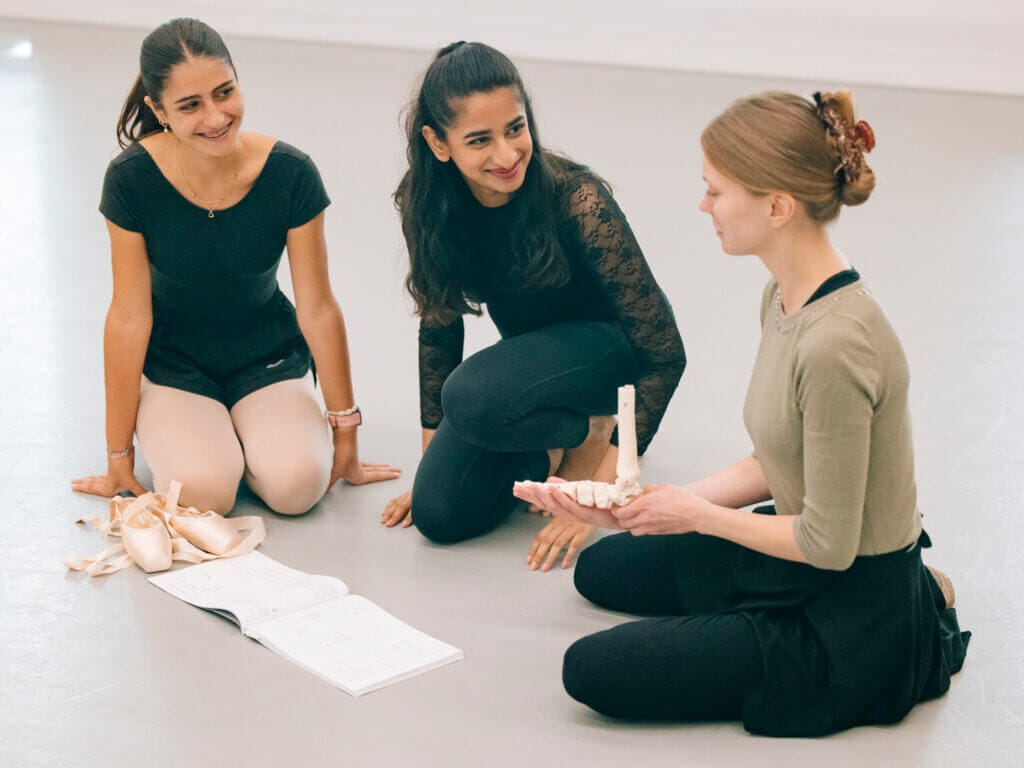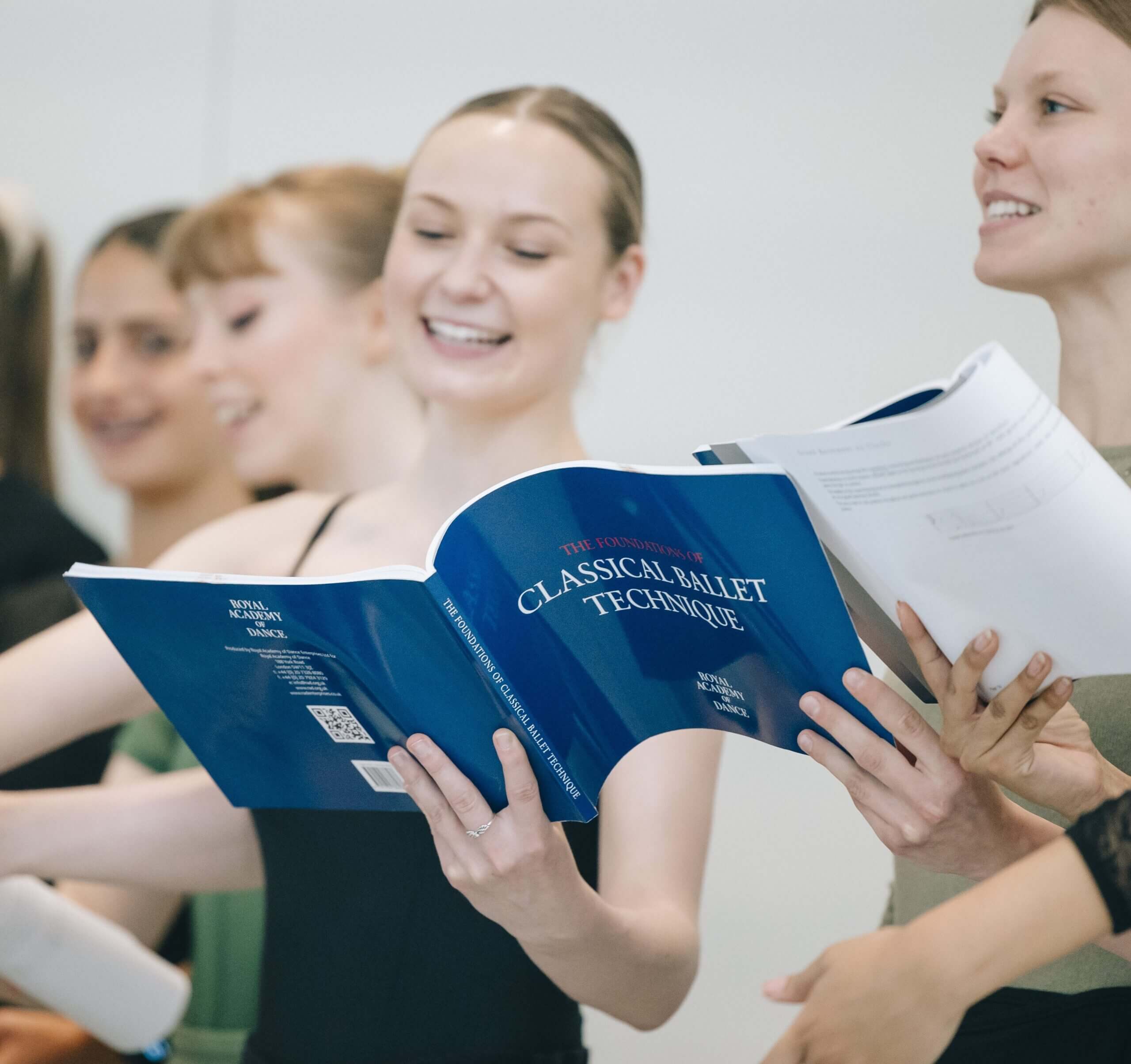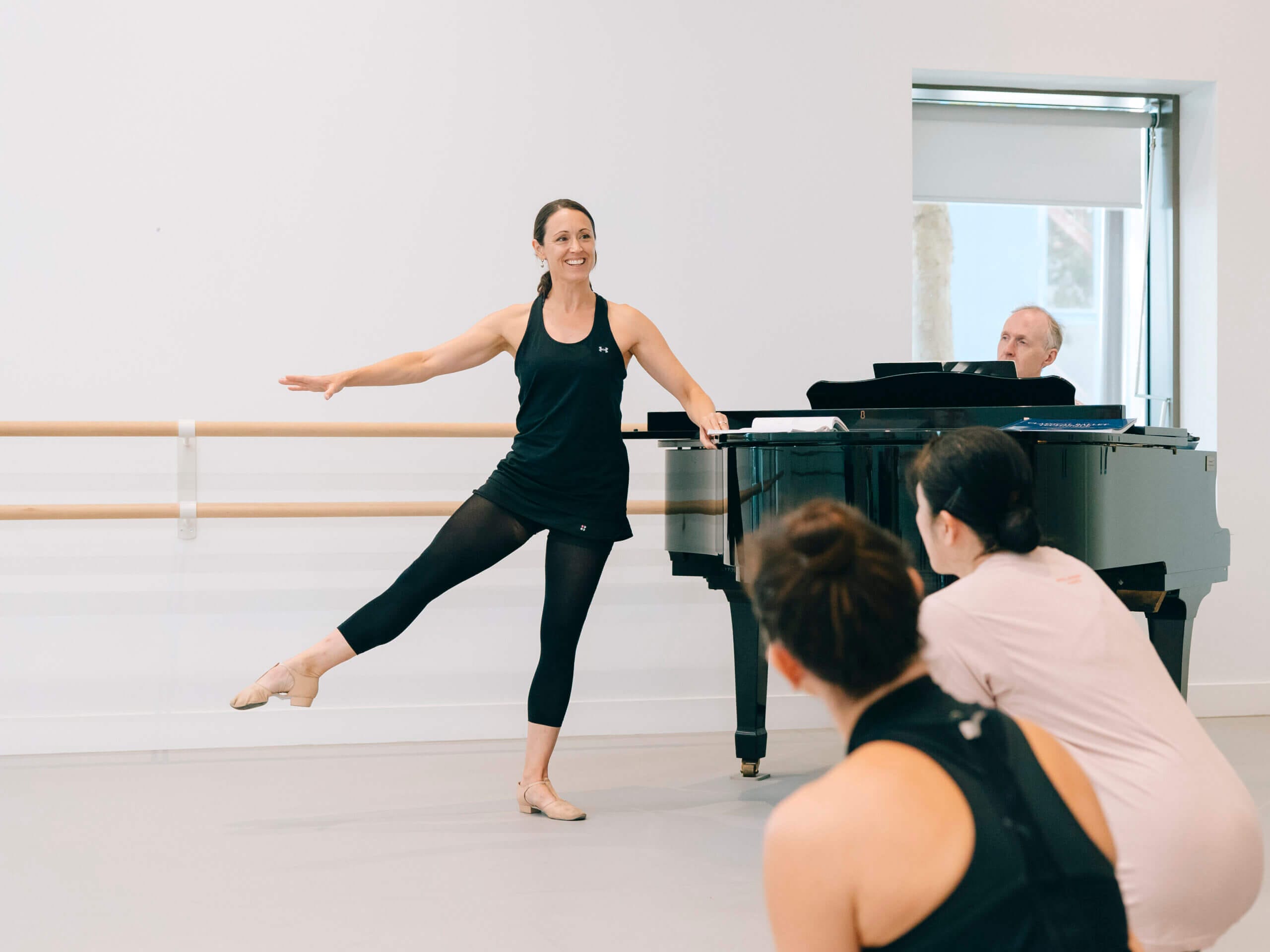Certificate in Dance Teaching (Ballet)
Location:
Online
Start:
12 January 2026
Duration:
2 years
Level:
Level 4
Credits:
120 credits
Fees:
£5,510* (UK students)
*per programme, plus £130 registration fee on enrolment.
The RAD’s certificate programme enables you to specialise in the teaching of ballet and gain a teaching qualification. You will develop the knowledge, understanding and skills to prepare you for your first steps in teaching ballet to a wide range of learners across different dance contexts.
Delivered through a combination of guided independent study, online learning and studio-based teaching practice, you will gain essential dance teaching skills and establish a foundation for lifelong learning.
You will be provided with one-to-one tuition and mentoring from our leading experts in dance teaching, as well as benefiting from collaborative learning opportunities with your fellow students as part of our worldwide student and teaching community. On successful completion, students are eligible to become Registered Teachers of the Royal Academy of Dance and may also choose to progress to one of our Higher Education programmes.

Your student experience
This programme explores key theories of learning and development, focusing on how they apply to teaching ballet. You’ll study cognitive and physiological development, models of learning, and how teaching theories are applied in practice to support effective ballet instruction.
Emphasis is also placed on health, wellbeing, and safe practice for all ballet students. You’ll learn to analyse ballet vocabulary, create appropriate teaching materials, and use a variety of strategies to reflect on and deepen your pedagogical skills. Through hands-on teaching practice, you’ll develop the ability to assess learner needs, plan inclusive lessons, and deliver ballet classes that are both effective and supportive.

Delivery
The programme is delivered part-time over two years through distance learning, enabling you to study alongside other commitments. You will receive one-to-one tutorial support from experienced tutors, with opportunities for collaborative study through online student forums. Each module is supported by a comprehensive module study guide and online materials.
In Year 1, students are required to attend a 5-day Intensive Study Period (ISP).
In Year 2, students complete a mentored Practical Teaching Placement.
What do intensive study periods involve?
The Intensive Study Period (ISP) gives you an opportunity to work face-to-face with an experienced RAD tutor, musician and your fellow student teachers. During the five days, you will examine the key principles and practice of teaching classical ballet, covering topics such as the foundations and progressions of classical ballet, working with music (both with pianists and recorded music), enchaînement construction and teaching pointe work.
You will also explore important aspects of dance pedagogy, including classroom and behaviour management, teaching strategies, the use of vocal dynamics and lesson planning, with opportunities for peer teaching, allowing you to put theory directly into practice in the ballet studio.


Career prospects
The combination of developing educational best practices together with intensive training in practical teaching skills enables our graduates to become informed, independent and articulate ballet teachers able to take up employment within the private dance studio sector and community settings where ballet is taught.
Former RAD graduates have gone on to work all over the world as ballet teachers. Many are offered employment within their placement schools or are successful in establishing their own dance school businesses.
Programme Content
First year
From January to March
CDT First year
Learning to learn
This module explores how students interact differently as they progress through developmental stages and in different environments. Study assignments and observations will enable you to consider students’ cognitive, physiological and social development and apply this to practical teaching experiences. You are asked to reflect on your own experiences as a student and observer to compile case studies of students at various stages of education.
From April to June
CDT First year
The Dancing Body
This module will examine basic physiological and anatomical principles and consider legislative requirements as they apply to safe practice in dance teaching. You will be asked to reflect on your own experiences and relate them to what is considered safe and healthy practice in dance.
From June to October
CDT First year
The Fundamentals of Teaching: Principles and Practice
In this module you have the opportunity to begin developing your knowledge and understanding of dance pedagogy through practical application. You are required to attend a five-day intensive study period (ISP) to support your practical learning of fundamental teaching skills.
From January to October
CDT First year
Work-based practice
During the first year of the programme you will need to have access to at least one dance teaching context to undertake a series of observations (six observations per module). There is no formal approval process for these contexts and you will need to organise the observations yourself. In the first year you will also be asked to identify a mentor for your second year teaching placement and will begin working with your mentor as you complete the module The Fundamentals of Teaching: Principles and Practice to prepare for the second year.
Second year
From January to October
CDT Second year
Practical teaching
This module requires you to undertake a teaching placement for the duration of the module. Working with an approved mentor, you will be required to complete observations, teaching as an assistant and as a lead teacher throughout the three phases of the module: defining, improving and consolidating practice. Each phase is assessed individually. Throughout the module, you will be required to engage in structured study assignments to support preparation and reflection on your teaching practice.





